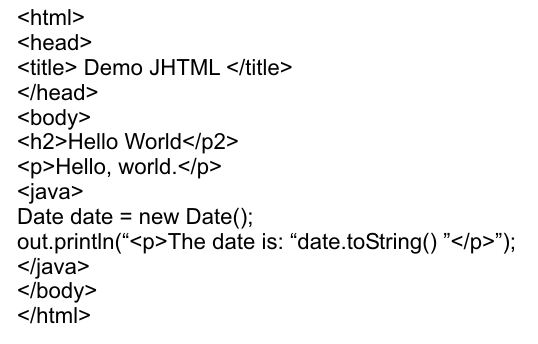Java HTML (JHTML)
JHTML(Java within Hypertext Language) describes a technique for embedding Java code directly into a web page - created in HTML code. This adds the dynamic aspects of Java servlet technology to the basically static HTML documents. Responsible for this is a servlet - the so-called PageCompileServlet, which calls the Java compiler for the translation of the Java code, which finally translates the embedded Java code. The use of JHTML is similar to the techniques used by Microsoft's Active Server Pages( ASP) or the Hypertext Preprocessor( PHP) scripting language to generate dynamic aspects in web pages. An alternative technique used in connection with Java is Java Server Pages( JSP).
JHTML is an easy way to integrate dynamic content into static HTML pages and is reduced to a few single steps:
- Creation of the HTML pages with e.g. a simple editor.
- Integration of the Java code with appropriate marking at any place.
- Storing the HTML/Java code in a file with the extension "jhtml" on the web server.
When a web client, generally the browser, now requests the web page, the web server recognizes this jhtml file and forwards the code to a special Java program - the so-called PageCompile servlet. This servlet initiates the Java compiler, which translates the Java code into a servlet, which then generates and adds the dynamic information to the HTML page, and finally makes it available to the client.
For example, the JHTML technique also provides the ability to access external distributed databases through the embedded Java code and the use of Java Database Connectivity( JDBC).
JHTML requires the installation of a Java compiler on the web server. JHTML is part of the Java Web Server Application Program Interface.

